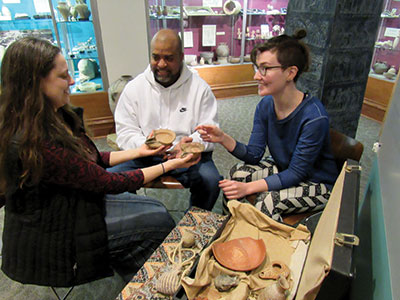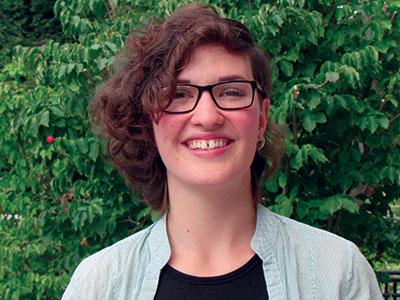MDiv Student is Looking Back and Branching Out
M.Div. senior Hattie Taylor left upstate New York—as in right next to Quebec—for seminary at PTS because “it felt like home” here. For Hattie that desire to branch out, to learn new things, to discern God’s leading by “testing the waters” is inherent.
Growing up in the United Methodist Church, at age 15 she started serving as a lay speaker. She knew then that she wanted to become a pastor. But as an undergrad at Houghton College she chose to major in philosophy—“just to make sure.” Her course of studies didn’t change her mind.
“I knew about Pittsburgh Seminary because my dad graduated from here in 1989. Since he had such a good experience, I decided to visit. I found the community friendly and welcoming—and I liked the balanced approach to social action.”
So south she came.
And with her she brought experience working in a Victorian-era museum—experience that helped her land a work-support job in our Kelso Museum of Near Eastern Archaeology. “During my first semester,” she reflects, “I took Old Testament with Dr. Tappy. My work in the Museum informed my understanding of the history I was learning in that class. In turn, the class and subsequent OT courses have enhanced my appreciation of the ancient material culture from the biblical lands displayed in the Museum.” A win-win for Hattie, who says her knowledge of the Bible “is much stronger now.”
 Hattie especially enjoys interacting with the people who visit the Kelso. “I give tours to confirmation groups from churches and people in substance abuse recovery programs, school children and adult Bible study groups, even archaeologists who drop in. Constant learning takes place in the Museum, and sometimes guests enlighten me about an object I thought I fully understood already. I love discovering how the picture fits together,” she says.
Hattie especially enjoys interacting with the people who visit the Kelso. “I give tours to confirmation groups from churches and people in substance abuse recovery programs, school children and adult Bible study groups, even archaeologists who drop in. Constant learning takes place in the Museum, and sometimes guests enlighten me about an object I thought I fully understood already. I love discovering how the picture fits together,” she says.
The Early Bronze Age room is Hattie’s favorite. Displaying the oldest material in the Museum, “it demonstrates a less complex way of life,” she notes. “Real people used these objects—and survived without computers and other modern gadgets.”
Hattie thinks of her Museum work as para ministry. She’s also engaged in pastoral ministry—not in a UMC church, as one might expect, but at St. Andrew’s Episcopal Church. “I pursued a field education placement there because I wanted an experience that differed from what I had growing up,” she explains. For Hattie, discernment involves branching out.

